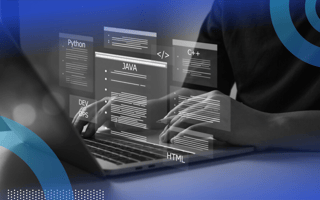Once limited to managing on-premises systems through manual processes, platform engineering has evolved alongside advancements in cloud computing, automation and modern development practices. Today, platform engineering delivers automated, scalable and resilient environments that empower teams of all kinds to iterate faster and maintain high reliability.
For product teams, this shift translates to shorter deployment cycles, enhanced collaboration and the ability to stay laser-focused on innovation. As the field matures, it’s becoming increasingly clear that platform engineering is more than a trend: it’s a cornerstone of modern software development.
How Can Platform Engineering Improve Product Development?
Platform engineering can streamline the product development process by providing developers with centralized, reusable tools and environments designed to reduce friction.
How Platform Engineering Changes the Development Game
Platform engineering has cemented its role in modern software development by addressing a fundamental need: efficiency. Instead of piecing together disparate components or resolving repetitive challenges, teams can now use platforms that offer standardized services like monitoring, authentication or document processing through software development kits and application programming interfaces.
This approach maximizes productivity by giving developers immediate access to the building blocks they need to create robust, scalable and secure systems. SDKs, for instance, play a pivotal role in this ecosystem by abstracting complex operations — such as rendering documents or integrating with cloud storage — into accessible, ready-to-use functions. The result is incredibly impactful as you can spend less on repetitive tasks and more time on innovating core features that differentiate a product from competitors.
Beyond operational efficiency, platform engineering also fosters consistency across development teams. By aligning workflows and ensuring all teams operate with shared resources, organizations can reduce errors, accelerate release cycles, and maintain a focus on delivering value. As technology evolves, the principles of platform engineering ensure teams remain agile and resilient, able to adapt to new challenges without sacrificing velocity or quality.
How to Introduce Platform Engineering Into Your Organization
One of the greatest advantages of platform engineering is its ability to eliminate inefficiencies and empower teams to focus on delivering impactful solutions. For organizations considering a shift toward platform engineering, the first step is identifying recurring pain points: Is infrastructure setup consuming valuable development time? Are teams struggling with inconsistent practices or bottlenecks in scaling systems? Recognizing what the current issues are is an essential component to begin building a platform that genuinely solves problems.
Once you map the pain points, align goals across the organization. For example, determining whether to establish a dedicated platform engineering team or use existing engineering resources depends on the scale and complexity of the needs. Standardization is at the heart of this transformation: unified coding practices, security protocols and infrastructure workflows provide a strong foundation for collaboration and reliability.
SDKs and pre-built tools are a prime example of this standardization. By incorporating these resources, teams can implement a uniform approach to solving common challenges, ensuring consistent performance and security across projects. This allows product and engineering teams to operate cohesively, iterating faster and responding to user needs with greater precision.
By starting small — perhaps with a pilot initiative focused on a single pain point — organizations can gradually expand their platform engineering capabilities, refining workflows and demonstrating value as they scale.
The Impact of AI and Serverless Architecture on Platform Engineering
Platform engineering is evolving alongside two other major technological advancements: artificial intelligence and serverless architecture. Each of these advancements offer opportunities to enhance the efficiency and scalability of platforms, but we must approach their integration thoughtfully.
AI can streamline platform engineering workflows by automating repetitive tasks, such as infrastructure monitoring or error detection. To incorporate AI effectively, teams should analyze their current workflows, identifying areas prone to human error or inefficiency. SDKs designed for AI integration can help developers seamlessly implement features like natural language processing or predictive analytics into their platforms. The quality of data you use to train these AI systems, however, is important, as poor data can lead to unreliable outcomes, which can undermine the platform’s integrity.
Serverless architecture, on the other hand, complements platform engineering by enabling developers to build and deploy functions without managing the underlying servers. This approach aligns with the goals of platform engineering by further reducing infrastructure overhead and providing scalable, cost-effective solutions.
Together, AI and serverless technologies amplify the benefits of platform engineering, allowing teams to deploy faster, operate with greater precision and innovate at scale.
When adopting these advancements, organizations must prioritize security and compliance. Industries with sensitive data, such as healthcare or finance, require robust safeguards to ensure AI and serverless tools meet regulatory standards and protect user information.
As product teams face increasing demands for rapid delivery and high reliability, the ability to adopt platform engineering practices will determine their capacity to thrive in a competitive landscape.





